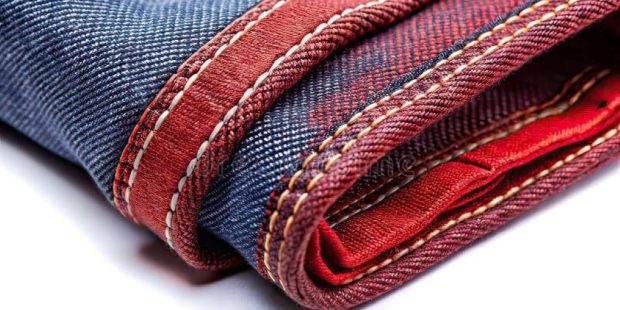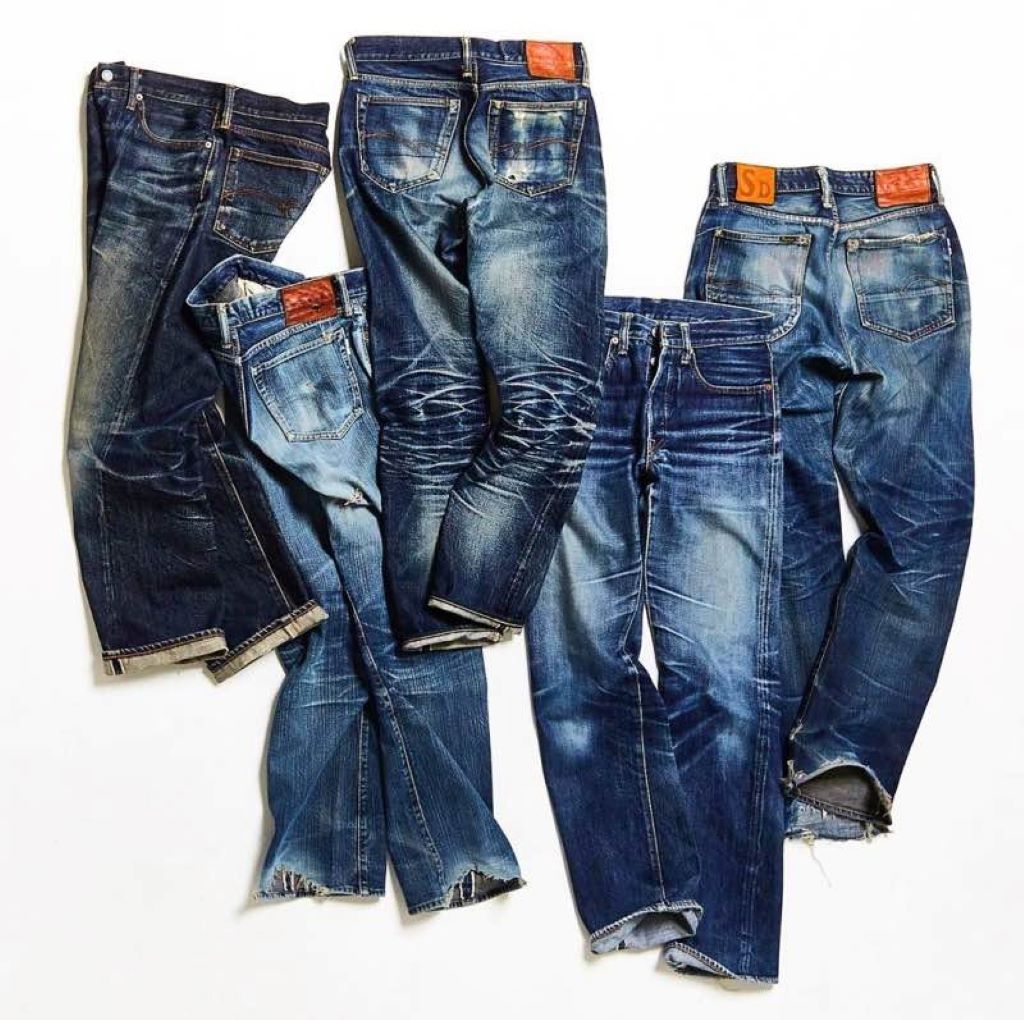
When it comes to denim, especially the niche and highly coveted category of selvedge denim, Japan has firmly established itself as a global leader both in quality and style. Japanese selvedge denim is more than just fabric; it’s a symbol of meticulous craftsmanship, tradition, and a passion for perfection that has captivated denim enthusiasts worldwide. But how did Japan rise to become the epicenter of selvedge denim production? This article delves deep into the fascinating history of Japanese selvedge denim, uncovering its origins, evolution, cultural significance, and why it continues to reign supreme in the world of premium denim.
What is Selvedge Denim?
Before diving into the history, it’s essential to understand what selvedge denim is. Selvedge (or selvage) denim refers to a type of denim fabric woven on traditional shuttle looms, producing a tightly woven band on the edges of the fabric that prevents unraveling. This edge, or “self-edge,” often features a strip of colored thread (commonly red) and is a hallmark of high-quality denim.
Unlike mass-produced denim fabric made on modern projectile looms, selvedge denim is more durable, heavier, and boasts a unique aesthetic found in premium jeans.
The Origins of Denim and Selvedge
To appreciate Japanese selvedge denim, we must first look at the roots of denim itself. Denim originated in the late 19th century as durable workwear fabric in the United States, famously associated with Levi Strauss & Co. and their blue jeans designed for gold miners and laborers.
Selvedge denim production began on shuttle looms, which produced narrow fabric widths with natural edges that did not fray. However, by the mid-20th century, the American denim industry largely shifted to faster, cheaper projectile looms producing wider fabric that lacked selvedge edges. This transition saw the decline of authentic selvedge denim production in the U.S. by the late 1960s.
How Japan Entered the Denim Game: Post-World War II Influence
The history of Japanese selvedge denim cannot be told without mentioning the post-World War II period. After the war, Japan was flooded with American military surplus, including denim fabric and jeans. Japanese workers and consumers developed admiration for the quality and durability of American denim.
However, Japan lacked modern textile manufacturing on the scale seen in the U.S. Instead of adopting mass production, Japanese manufacturers focused on traditional weaving techniques and precision. This laid the groundwork for authentic selvedge production.
The Birth of Japanese Selvedge Denim Industry
The actual rise of Japanese selvedge denim began in the 1960s and 1970s with a small group of visionary textile producers who sought to revive shuttle loom weaving. One significant milestone was Toyoda Textile Machinery, which started producing and maintaining vintage shuttle looms originally acquired from the U.S. and Europe. These looms made it possible for Japan to produce high-quality selvedge denim fabric internally.
In the 1980s and 1990s, Japan’s denim industry further matured as denim became fashionable, not just functional. Denim brands and manufacturers like Kaihara, Kurabo, and Nihon Menpu began producing selvedge fabrics for domestic and international markets, emphasizing craftsmanship, quality, and attention to detail.
What Makes Japanese Selvedge Denim Unique?
-
Shuttle Loom Technology
Japanese mills like Kaihara and Kurabo revived and perfected shuttle loom technology to create selvedge denim with tight, clean edges. These looms weave denim slowly but produce superior quality fabric with rich texture and longevity.
-
Indigo Dyeing Mastery
Japan has also refined the art of indigo dyeing. Japanese artisans use natural and synthetic indigo in multiple dips to produce deep, vibrant colors. The dyeing process is lengthy and labor-intensive, ensuring each yard of denim ages beautifully with wear.
-
Attention to Detail
Japanese denim manufacturers are known for their obsession with quality – from hand-selected cotton fibers to weaving techniques, fabric weight, and cutting-edge design.
-
Unmatched Craftsmanship
Many brands produce limited runs of selvedge denim by hand, balancing tradition with innovation. The presence of skilled artisans dedicated to denim sets the industry apart.
The Boom: Japanese Selvedge Denim Goes Global
By the early 2000s, Japanese selvedge denim captured the attention of international fashion enthusiasts, collectors, and quality-focused consumers. Denim enthusiasts flocked to Japan to purchase rare denim products, while global brands began collaborating with Japanese mills.
This surge in popularity has led to Japanese denim brands such as Momotaro Jeans, Iron Heart, Pure Blue Japan, and Samurai Jeans becoming synonymous with premium selvedge denim.
Cultural Significance of Japanese Selvedge Denim
Japanese selvedge denim represents more than fabric; it is a cultural expression reflecting Japan’s dedication to perfection, patience, and respect for craft. It embodies the “Monozukuri” spirit—a Japanese philosophy rooted in craftsmanship and innovation.
Jeans aren’t simply pants—they tell a story through their fades, creases, and texture developed over years, offering an emotional connection often missing in mass-produced apparel.
Environmental and Ethical Impact
Interestingly, many Japanese selvedge denim producers emphasize sustainable practices. By using traditional shuttle looms and natural indigo dyeing methods, they reduce energy consumption and chemical waste compared to fast-fashion denim production.
This slower, artisanal approach aligns with growing consumer demand for sustainable and ethical fashion choices, making Japanese selvedge denim even more desirable.
How to Identify Authentic Japanese Selvedge Denim
If you’re interested in purchasing Japanese selvedge denim jeans, look for these key indicators:
- Selvedge Edge: Visible on the inside seams of the jeans, usually featuring a colored thread (commonly red or orange).
- Fabric Weight: Japanese selvedge denim often ranges from 12oz to over 21oz, heavier than typical denim.
- Manufacturer Tag: Brands like Momotaro, Samurai, and Iron Heart indicate Japanese origin.
- Arcuate Stitching: Many Japanese jeans feature unique back-pocket stitch designs reflective of quality tailoring.
- Price Point: Authentic selvedge denim is an investment, often priced higher than standard jeans due to the craftsmanship involved.
Frequently Asked Questions (FAQs)
Q1: Why is Japanese selvedge denim more expensive than regular denim?
Japanese selvedge denim requires slow, meticulous production using vintage shuttle looms, quality raw materials, and skilled labor. This craftsmanship, combined with limited production runs and superior fabric durability, increases its price.
Q2: How do I care for my Japanese selvedge jeans to ensure longevity?
Wash your jeans sparingly and preferably inside out in cold water. Avoid machine drying and instead air-dry them. Many denim enthusiasts wait months before the first wash to allow the indigo to set and create personalized fades.
Q3: Are all Japanese denim selvedge?
No, while Japan is renowned for selvedge denim, not all denim produced in Japan has selvedge edges. Look for vintage shuttle loom woven denim or explicitly labeled selvedge denim.
Q4: Can selvedge denim be found in other countries?
Yes, selvedge denim is also produced in the U.S., Italy, Turkey, and other countries, but Japanese selvedge denim is often regarded as the highest quality due to its unique manufacturing process.
Conclusion: Why Japanese Selvedge Denim Endures as a Timeless Classic
Japanese selvedge denim stands at the intersection of tradition, quality, and culture. It represents a centuries-old commitment to craftsmanship, a spirit of artistic innovation, and a deep respect for materials and labor. Wearing a pair of Japanese selvedge jeans isn’t just a fashion statement—it’s an appreciation of authentic skill, heritage, and timeless style.
Whether you’re a denim aficionado or just starting your journey into premium jeans, exploring Japanese selvedge denim opens the door to a world where quality supersedes quantity, and every thread tells a story. If you want to invest in denim that improves with age and carries rich cultural significance, look no further than Japan’s iconic selvedge denim.
Related Topics:
11 Stylish Jumpsuit Alternatives: Discover Matching Sets for Every Occasion
What to Wear Under a Denim Jacket in Cold Weather

